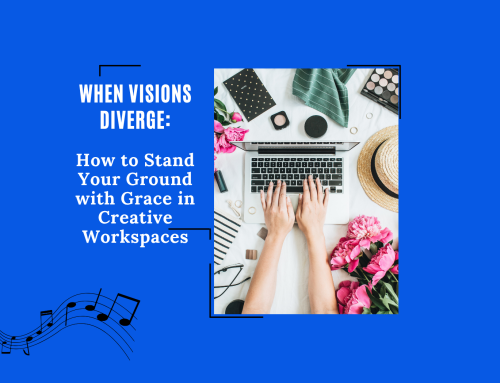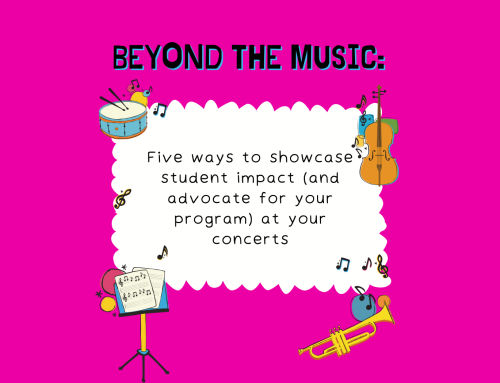
“Okay, that’s it! Anyone who has questions can stay on the call; otherwise, you are free to go. I miss you all! Have a wonderful summer!” (double waves and beams)
This was how I ended my last 7th-grade choir class of the year. It took place on Zoom, there was almost no singing involved, and a handful of students never turned on their cameras. I wasn’t feeling like my most effective teacher-self.
A few of the regulars stayed on the call to chit chat, as did another student, Mike. “Hey, Mike, what’s up?” I asked. He thanked me for teaching him this year (so sweet!) and then told me that he thought this was our best year in choir yet. This was my THIRD year with him. I was floored. We had missed performances, we barely sang, and I was making things up as I went along. I had been in survival mode for three months.
“Oh, really? What did you enjoy about it?” (genuinely curious)
He described ways in which I had tailored my curriculum to the students during the pandemic and noted how much he appreciated having this twice-weekly outlet. He referenced specific activities that he felt had helped him process current events and cope with fear and uncertainty.
We hadn’t achieved our curricular goals this year, and I had been mourning the opportunities my students missed. I viewed the year as a flop and was trying to imagine how to recover the lost time. But a conversation with Mike and a review of our student reflection doc suggested that many students were feeling pretty inspired. They were genuinely enjoying and appreciating their musical experience during distance learning. It appears that maybe they NEEDED this time and support to meditate, reflect, explore, and create.
Learning Environments:
I usually run a fairly traditional choir class, which is a required part of the 5th-8th grade course load at our school. Our classes follow a sequence of sightreading, breathwork, warm-ups, musical concepts, and vocal technique taught through choral singing. I always feel rushed, like I’m constantly busy yet still never getting enough contact time. We sightread and sing pretty well for a mandatory-participation program, and for the most part, parents are happy, and students have a positive learning experience.
During distance learning, I was frantically creating content and trying to stay one step ahead of my students. My units were disjunct. I would have loved to plan them better but did my best with the time and information I had. Learning was mostly asynchronous. On a positive note, students were given more opportunities for differentiated learning and self-exploration. It was also more project-based.
Distance Learning Content:
Units we covered during the months of March-June included:
- Vocal technique/part-singing
- Recording techniques
- FlipGrid submissions of students singing a school-appropriate song of their choice
- Practice Tips
- Healthy Vocal Habits project
- This was a U-Pick assignment that I accessed and modified from the I’m A Choir Director Facebook group.
- Sightreading Factory assessments
- The Blues
- I created this unit based on YouTube videos providing historical context and a screencast of myself illustrating the blues scale and 12-bar blues chord progression.
- The Quarantine Blues
- This was a 3-part project I created in which students wrote lyrics, composed a melody from the blues scale, and recorded themselves singing with a 12-bar blues accompaniment.
- Interactive Classroom
- This was also an idea I got from the I’m A Choir Director Facebook group. I saw something similar in the Music Educators Creating Online Learning Facebook group.
- I got REALLY into it, with themed rooms like the “Zen Den,” where students could access guided meditations, peaceful mantras, and soothing music.
- I also hid winky little jokes around the room for students to find.
- Optional: Protest Songs (live Zoom class)
- Other students had the option to catch up on missing work or continue to explore the Interactive Classroom
Applications used:
- Sightreading Factory
- FlipGrid
- Screencastify
- Google Slides
- Google Classroom
- Google Docs: Grade-level Reflection doc
(students respond to a prompt after each class)
- Piktochart
- Pixabay
- Zoom
Students demonstrated learning through:
- YouTube tutorials
- “TedTalk”-style informational videos
- Digital posters
- Song covers
- Compositions
- Raps
- Music videos
- Poems
- Artwork
- Assessments
- Articles
Realizations
We did not accomplish as much vocally or with sightreading/theory as we would have, using our traditional teaching model. There was also limited accountability: our school discourages individual check-ins with students, and we have temporarily moved to a Credit/No Credit grading system. However, because we didn’t have a singular focus on the concert, we were able to play more. We had time to be creative and experimental. On days when students needed it, they could just breathe in the Zen Den. They got to mourn what they were missing during quarantine, and when the protests began, we made space for sharing protest songs. It was cathartic, and it has me thinking that maybe back at school, I had been focusing on the wrong things. I believe strongly in choral music education and recognize that constraints are put upon us that drive us to become performance-focused. However, this experience in distance learning has taught me that I need to find or make the time to focus on the whole child. There will always be students going through hardship, even after things return to “normal.” I’m making an intentional shift toward healing through music education, and intend to pursue professional development in this area. Maybe I should have focused on healing all along.

Do you know of any great resources or professional development opportunities on this topic? Share them in the comments!




Leave A Comment